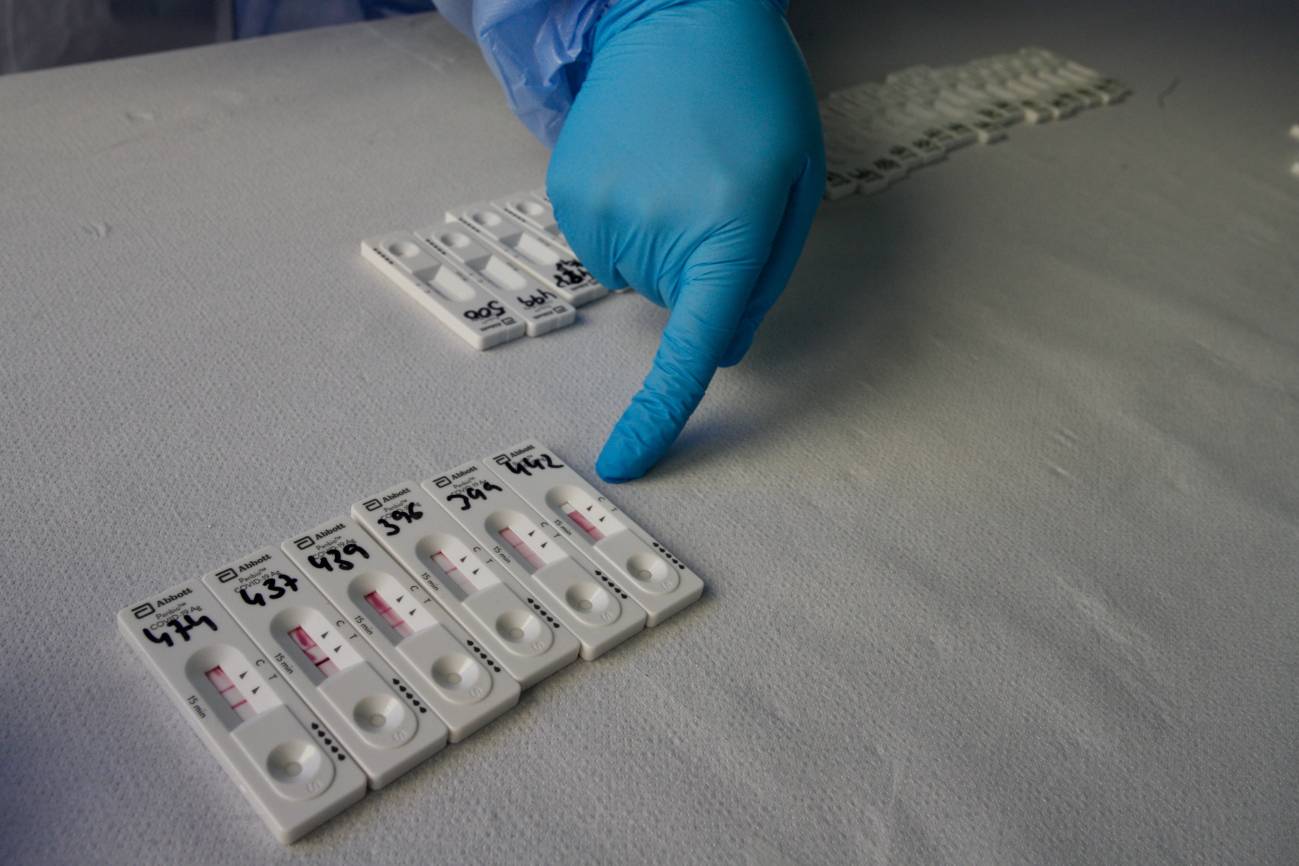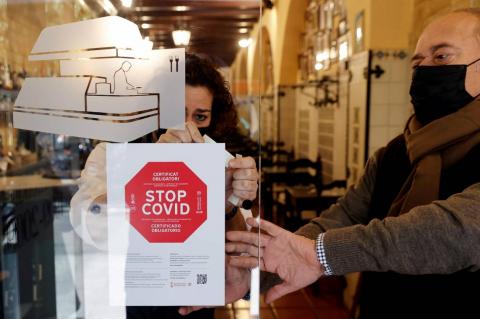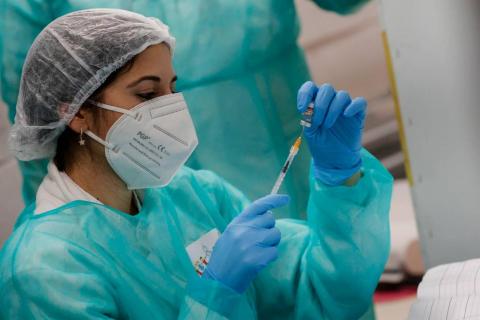On 7 December, one of the researchers tracking in real time the unfolding evolutionary tree of the SARS-CoV-2 coronavirus, Andrew Rambaut, proposed adding a new branch to that of the omicron variant. Days earlier, from Australia, South Africa and Canada, other coronavirus evolutionary watchers had uploaded to the global SARS-CoV-2 genome database sequences with "many, but not all, of the mutations that define omicron, and with other mutations of their own," Rambaut wrote.
One of the genetic differences in the new BA.2 subvariant affects the way a commercial brand of PCR test detects the coronavirus: the original omicron shows only two of three molecular markers, while the new subvariant has all three.
Until then, the detection of only two indicators in PCRs allowed for a suspicion of omicron infection, a kind of quick shortcut to detection. The advent of the new subvariant meant that PCRs with three indicators could also be omicron.
In genomic surveillance, the change was not very important, given that to identify variants "the complete sequence is always done", explains Iñaki Comas, from the CSIC, to SINC. Sooner or later any version of omicron would have been detected.
The spread of a confusing label
But The Guardian newspaper considered it newsworthy that this shortcut for preliminary identification of omicron was no longer useful.
On the same 7 December it reported, correctly, that "omicron is still detected as a coronavirus by all the usual tests (...) but probable cases are no longer flagged by routine PCR tests, which give faster results". But the headline said otherwise: "Scientists discover 'stealth' version of omicron that cannot be identified by PCR test".
Emma Hodcroft, a molecular epidemiologist at the University of Bern, who follows the evolution of coronavirus variants on Nextstrain, reacted on Twitter: "NO! There is no new variant that is not detectable with PCR". "There is a new variant related to omicron and we can certainly detect it with PCR. What we won't be able to do is distinguish it very easily" from other omicrons.
The headline was shortly changed to "Scientists discover 'stealth' version of omicron that may be harder to detect". But the incorrect one had already been disseminated by other media, and the stealthy label was still there.
"By now you should know that..."
Francois Balloux, director of the Institute of Genetics at University College London, said on Twitter the same day that he had noticed "in a routine check" that BA.2 would be detected differently in some PCR tests. Presumably he discussed this with journalists, because he added: "I didn't expect this fleeting exchange to become national news. I should have been clearer. I should know by now...".
Calling it 'stealthy' is a mistake that can be fear-inducing
Margarita del Val, immunologist
Margarita del Val, head of the Viral Immunology Unit at CSIC, has insisted to SINC that "it is perfectly detectable with all PCR probes", and that "calling it 'stealthy' is a mistake that can lead to fear".
"We have not yet seen very different biological properties" to BA.2, he adds, and "we must protect ourselves in the same way" as with the other variants.
Spreading fast
The current evolutionary tree of the omicron variant, now dominant in Spain, "comprises lineages BA.1 (the majority), Ba.1.1, BA.2 and BA.3," explains the latest technical report (31 January) from the Centre for Coordination of Alerts and Health Emergencies (CCAES).
Already present in more than 50 countries and spreading rapidly, the WHO recommends "prioritising research on the characteristics of the BA.2 lineage, including immune escape and virulence, independently of the BA.1 lineage and comparing the two lineages".
Little presence in Spain
In Spain, 95.1% of the samples randomly sequenced from 10 to 16 January are omicron. The vast majority are BT.1. "As of 31 January, three confirmed cases of BT.2 have been registered in the Spanish Surveillance System (SiViEs)," reports the CCAES.
More transmissible
So far only two preliminary studies in the UK and Denmark have analysed how BA.2 behaves compared to its omicron sisters. Both show that it is more easily spread. The UK report finds that it spreads faster; contact tracing indicates that, in households, one BA.2 infected person spreads to more cohabitants.
The same is observed in Denmark. But the Danish work distinguishes the effect of vaccination, which appears to be greater with BA.2 than with BA.1: vaccinated people infected with BA.2 infect their cohabitants less than BA.1, but unvaccinated people infect 2.6 times more.
No more severe
As the CCAES report notes, the Danish study "found no difference in the risk of hospitalisation between BA.1 and BA.2". It cautions, however, that "it is too early to establish the phenotypic characteristics of this lineage".
Vaccines work
The UK study finds "no difference in vaccine effectiveness against symptomatic disease between BA.2 and BA.1", he says, although he acknowledges that the work includes "relatively few" cases and needs to be repeated.
Does infection with BA.1 protect against BA.2?
The two versions are "quite distinct from each other" genetically, Comas tells SINC. The evolutionary tree in NextStrain suggests that the BA.1 and BA.2 subvariants, although both are considered omicron, are as distinct from each other as other variants were. This could mean that getting infected with one does not fully protect against the other.
It's not going to be like when delta came along, or omicron itself. BA.2 is not likely to change the course of the pandemic
Iñaki Comas, CSIC
But, as Emma Hodcroft has said, there is still no data on this. Mark Zeller, from the Scripps Research Institute (USA), has stated the same in Science. Hodcroft reminds us that we still do not know what the specific mutations of BA.2 do.
Will it affect pandemic control measures?
In the absence of more data, Comas does not anticipate any changes: "It's not going to be like when delta arrived, or the omicron itself. It doesn't seem that BA.2 is going to change the course of the pandemic," he tells SINC.




